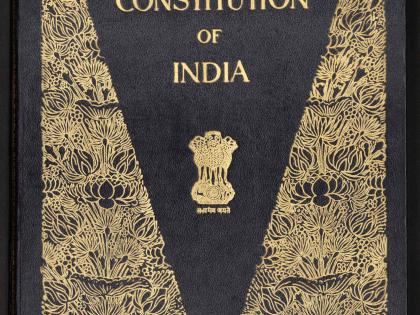Republic Day 2023: 10 significant facts about Indian Constitution
By Lokmat English Desk | Published: January 21, 2023 04:44 PM2023-01-21T16:44:05+5:302023-01-21T16:50:04+5:30
The Constitution of India is the supreme law of India, which lays down the framework demarcating fundamental political code, ...

Republic Day 2023: 10 significant facts about Indian Constitution
The Constitution of India is the supreme law of India, which lays down the framework demarcating fundamental political code, structure, procedures, powers, and duties of government institutions and sets out fundamental rights, directive principles, and the duties of citizens.
The document declares India a sovereign, socialist, secular, and democratic republic, assures its citizens’ justice, equality, and liberty, and endeavours to promote fraternity.
This year, India is marking the 74th Republic Day. On this special occasion, let’s take a look at some interesting facts about the Indian Constitution.
- M.N. Roy was the first person to suggest the idea of establishing a Constituent Assembly in 1934, which eventually became an official demand of the Indian National Congress in 1935.
- A few days after India received independence from British rule on August 15, 1947, a committee was constituted on August 29 to draft a permanent Constitution for independent India. Dr Bhimrao Ramji Ambedkar was chosen as the chairman of the committee.
- The first copy of the document was not printed or typed out; calligrapher Prem Behari Narain Raizada handwrote it in a flowing italic style.
- Artists like Beohar Rammanohar Sinha and Nandalal Bose from Shantiniketan, West Bengal, decorated each page of the Constitution book with their talent.
- The original 1950 constitution is preserved in a nitrogen-filled case at the Parliament House in New Delhi.
- Dr Rajendra Prasad, the first President of India, was the first person to sign the Constitution. Feroze Gandhi, the then President of the Constituent Assembly, was the last one to sign it.
- Indian women got the right to vote after the enforcement of the Constitution of India. Earlier, they were denied this right. Only men were allowed to cast votes.
- Besides being known as the largest democracy in the world, India is also known for having the longest Constitution in the world.
- Part III is known as the Magna Carta of India. Magna Carta is the Charter of Rights issued by King John of England in 1215. It is the first written document in connection fundamental rights of citizens.
- The judiciary, Supreme Court is the final arbiter and interpreter of the Constitution of India and constitutional amendments.